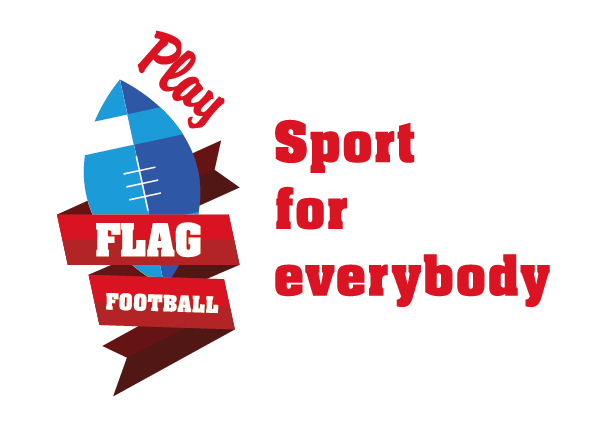In the project, we set ourselves the goal of introducing and spreading Flag football among young people in primary and secondary schools. As part of the project, we organized a webinar where we made an online presentation and introduced them basics of the sport. There are currently 7 teams playing in the championship in Slovenia, three of them also have junior teams.
In cooperation with the coach of one of the teams, we started making presentations in elementary schools with the aim of holding a national tournament.
How to approach teachers?
First, we sent invitations for a short presentation via social media and e-mail. We presented the basics to the teachers remotely and arranged for a presentation at their school. During the visit to the school, we presented them with the equipment and the course of the game and arange date for practical test together with the students.
Among all the schools to which we sent invitations, 4 schools responded, which also then joined the implementation of the national tournament. We believe that if we wanted to get more schools, we should repeat the campaign, because the time in which we organized the presentation did not go our way, as some teachers refused to participate due to the safety of the children – Covid 19.
When we started the presentations and trainings, we were surprised by the fact that the children are already playing a game similar to Flag football, otherwise called – tail pulling. Another thing that stood out was that the girls figured out the meaning of the game much faster than boys esppecially that you can stop the game with the flag pulled out.
We started the presentations in physical education classes, where we introduced them to sports and equipment. We also presented them with reasons why it is good for them to play flag football. Let’s list a few of them:
1. No Contact: Flag football is a non-contact sport, meaning there’s no tackling, diving, blocking, screening or fumbles allowed. Therefore, players are not required to wear any heavy equipment, such as helmets and shoulder pads.
2. Accessibility: Flag football is an incredibly inclusive sport and mix teams can play – older younger, boys – girls
3. Learn the fundamentals: The basic fundamentals taught in flag football directly transfer to tackle, including catching, throwing, formations, routes, and defensive skills. For example, the way defensive players are required to square up their body and align their head and knees is the exact positioning needed to physically tackle an opponent.
4. Easy commitment: With most leagues only meeting once a week, many families happily squeeze flag football into their packed schedules. Typically, teams practice for about 45 minutes before their game, and then the game itself is usually an hour or less.
5. It’s fun: Plain and simple, flag football is loads of fun. Games are quick, competitive and every drive counts, especially in tournaments. It’s game you can play in your backyar on every party.
After the theoretical presentations, we started with basic exercises such as throwing the ball and chasing around the gym with the aim of pulling out the flag.
When the children mastered the basics, we started step by step until they mastered the basics needed to play. We started playing fairly quickly, as the children quickly took Flag football as their own. However, it quickly became apparent which children had a sense for sports and started with actions and interceptions.
During the sports lessons, the children continued to file actions and train for the tournament, which we successfully held.
An example of good practice:
– Hinko Smrekar Elementary School
We did a Flag football presentation at school. Together with the physical education teachers, we agreed to conduct training sessions as part of the physical education classes and extended stay hours, thus improving knowledge and increasing interest among the children.
Our efforts paid off, as this school also won the national tournament.
In the following school year, we want to classify Flag football as a club that children will attend as an optional subject and will be equivalent to other optional subjects, because the school management has recognized our efforts and the efforts of the teachers and above all the interest and progress of the children through the game.
Conclusion
During the presentations, we encountered the problem that some schools do not have large playgrounds with natural or artificial grass where children could play. This was especially evident in Ljubljana, where there is already a lack of green spaces. In this case, we agreed with the club in Domžale – 15 km away, and we made a presentation at their place. The downside to this is that you are dependent on transport and playground availability.
We believe that Flag football has potential among children in Slovenia and should be included in the curriculum, if not at least in additional sports programs.


Recent Comments